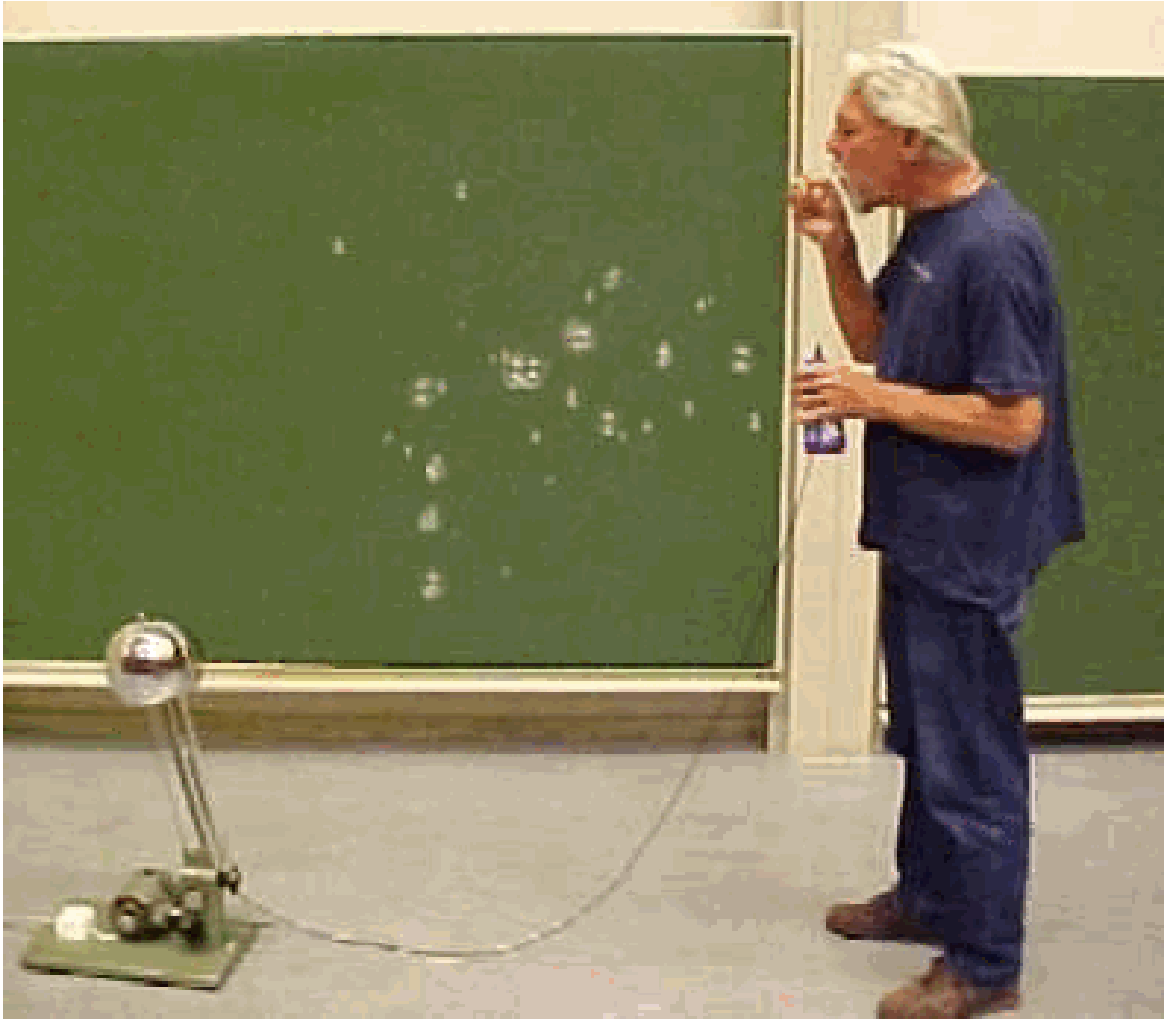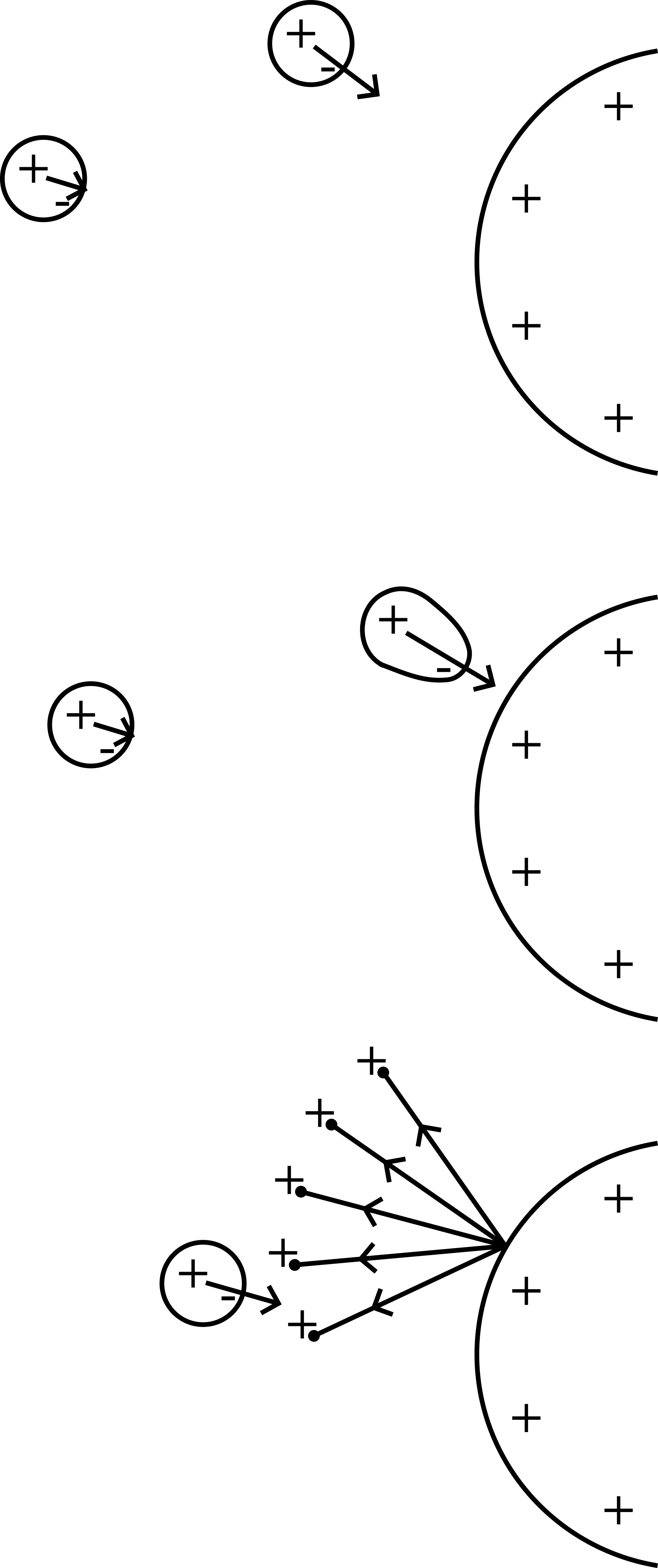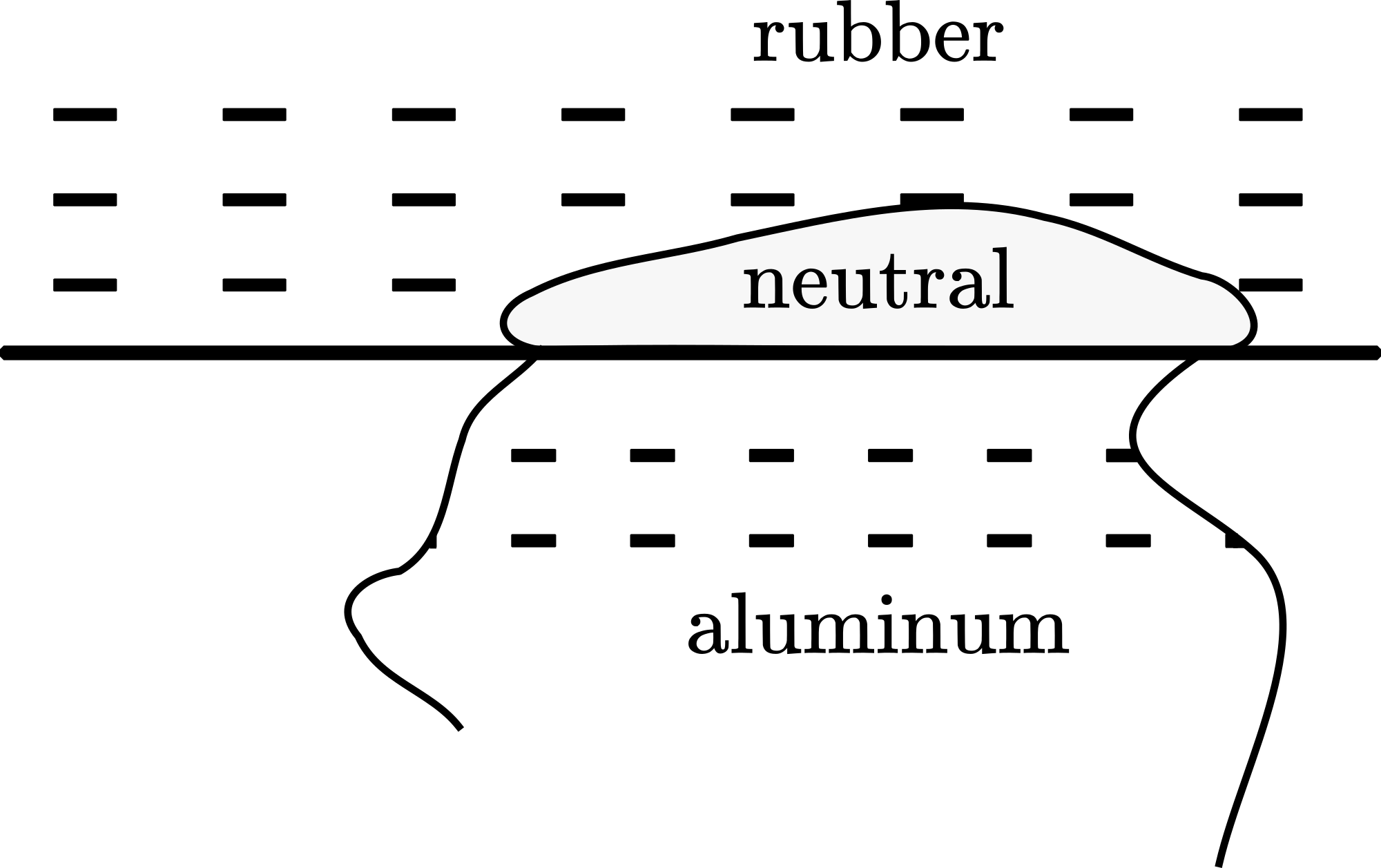01 Charging by Induction#
Aim#
Trying to apply the theory of attraction and repulsion in the phenomenon of attracting different pieces of scrap by a charged body.
Subjects#
5A40 (Induced Charge)
Diagram#

Fig. 441 .#
Equipment#
Rubber stick.
Cat fur.
Copper plate with scraps of aluminum foil.
Copper plate with scraps of (toilet)paper. (A piece of paper scrap is in weight equal to a piece of aluminum scrap.)
A lead connected to ground. .
Presentation#
Shortly, the copper plates with scraps are grounded. Then we rub the rubber stick with the cat fur. Then slowly the rubber stick is approaching the scraps of paper. Many of the scraps of paper are attracted (not all). Most of the attracted scraps stick to the rubber stick, some are ordering themselves in lines (see Diagram, figure A and B) and a few of them fly away.
Again the rubber stick is rubbed with the cat fur. Now the rubbed stick approaches the scraps of aluminum. Many of them are attracted (not all) and most of them fly away with high speeds when touching the rubber. Also will some of them stick to the rubber.
Explanation#
The scraps of paper and aluminum are neutral in the beginning. Rubbing the stick charges it negatively and on approaching the paper scraps it induces a polarization in them. The scraps of paper, being insulators are polarized locally. The stick, being charged negatively, redistributes the charge in the neutral “paper-molecules” so that closest to the stick the “paper-molecules” have a net positive charge and on the other side an equally large positive charge (A double overhead sheet can help to explain this: see the demonstration “Polarizing a dielectric” in this database). This results in the piece of scrap being positive on one side and negative on the other. The stick attracts the positive side and repels the negative side of the paper scrap. Applying Coulomb’s law shows that due to the \(r^{-2}\) relationship the attraction is stronger than the repulsion and the piece of scrap is attracted (see Figure 442A).

Fig. 442 .#
In case of the aluminum scraps a similar mechanism is at work, but now the free electrons in the aluminum do the job of charge distribution. The negatively charged rubber stick repels the free electrons in the piece of aluminum scrap to the far side and so the piece of scrap becomes polarized. Again Coulomb’s law shows that the resulting force is attracting. When the aluminum scraps hit the rubber stick they are generally launched away from the stick: There must be a strong repulsive force at contact; charges have to be equal now.
This can be explained in supposing that free electrons move from the surface of the rubber stick into the aluminum scrap (that is still positive on that side just before contact to the rubber rod) and locally the rubber is neutralized. The piece of scrap, having gained electrons now has a net negative charge and, being close to a surrounding of negative charge, is strongly repelled (see Figure 443).

Fig. 443 .#
That some of the aluminium scraps stick to the rubber can be due to two causes: - The neutral area in the rubber stick is wider, and so the attraction of the negative piece of scrap to the neutral (polarized) area of the stick wins over the repelling forces; - The free electrons of the rubber are not going into the piece of aluminium scrap (on contact no tunnelling occurs) and so the polarized piece of aluminium sticks to the negative rubber like most of the paper scraps did.
That also some of the paper scraps fly away on touching the rubber stick means that in some cases some of the electrons in the rubber probably can move onto/into the paper scraps as well and repulsion results. But the demonstration also shows that these repulsions are weaker than in the case of aluminum scraps. (In this case of rubber and paper the neutral region is made in both materials.)
Remarks#
Often the rubber stick is charged “too good” and sparks jump from the stick to the scraps. The induction-story does not apply any longer. When in class this situation happens we apply a less good tribo-electric material: a pvc tube rubbed with a silk cloth. Take in mind that when you tell the story the pvc tube is negatively charged.
